AMD is currently developing two new professional graphics cards based on the RDNA 3 architecture: the Radeon Pro W7600 and W7500. These graphics cards have a memory capacity of 8 GB and are specifically designed for entry-level professionals. So far, AMD has served the high-end professional market with the Radeon Pro W7900 and W7800 RDNA 3 GPUs, but this will change in the near future. A sneak peek at the Radeon Pro W7600 and W7500 graphics cards was made possible by a leak at Videocardz. These new models will offer similar benefits of the RDNA 3 architecture for entry-level professionals.
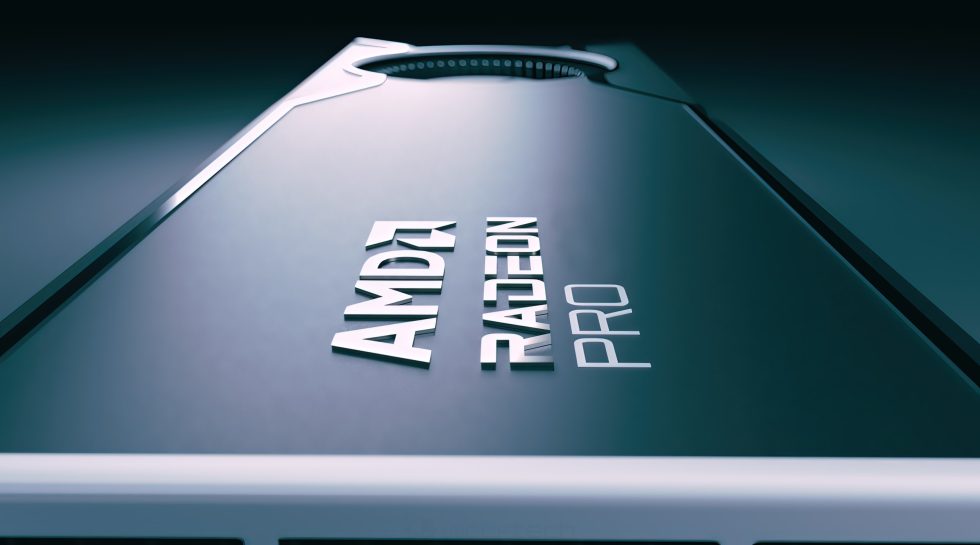
Both the AMD Radeon Pro W7600 and Radeon Pro W7500 graphics cards use the Navi 33 GPU SKU as their base. The W7600 is equipped with 32 processing units or 2048 stream processors and achieves a processing power of up to 20 TFLOPs. In comparison, the Radeon Pro W7500 has 28 processing units or 1792 stream processors and a processing power of up to 12 TFLOPs. The Radeon Pro W7600 was also leaked a few days ago and some tests and information about it were published.
The entry-level Radeon Pro graphics card is equipped with 8 GB of GDDR6 memory and ECC support over a 128-bit wide bus. While the AMD Radeon Pro W7600 retains the same memory capacity as its predecessor, the W7500 gets an upgrade compared to the AMD Pro W6400/W6500M, which only had 4 GB of memory over a 64-bit wide bus interface. Possibly a mid-range solution like the Radeon Pro W7700 has 12 to 16 GB VRAM. The Radeon Pro W7600 offers a pin speed of 18 Gbit/s and a bandwidth of up to 288 Gbit/s, while the W7500 reduces its speeds significantly to 11 Gbit/s with a bandwidth of 176 Gbit/s.
AMD Radeon Pro WX7600 & WX7500 Specifications
In terms of other specifications, both the AMD Radeon Pro W7600 and W7500 have a single-slot design with a blower-style fan. Both cards are equipped with four DisplayPort 2.1 ports. The Radeon Pro W7600 requires a single 6-pin connector to meet its 130W power requirements, while the W7500 is powered directly from its PCIe slot, requiring only 70W. The cards also differ in color, with the W7600 available in black and the W7500 in silver.
AMD Radeon Pro WX7600 & WX7500 Performance
Performance comparisons show that the Radeon Pro W7600 offers a 56% increase in real-time ray tracing performance and a 27% increase in Autodesk performance compared to the NVIDIA A2000. The Radeon Pro WX7500 on the other hand is compared to the NVIDIA T1000. AMD is known for its aggressive pricing of its mainstream Pro GPUs compared to NVIDIA’s Pro offerings, and this is expected to be the case with these two solutions as well. The official unveiling of the AMD Radeon Pro W7600 and Radeon Pro W7500 is expected to take place next week at SIGGRAPH 2023, making more information available.
Source: WccfTech













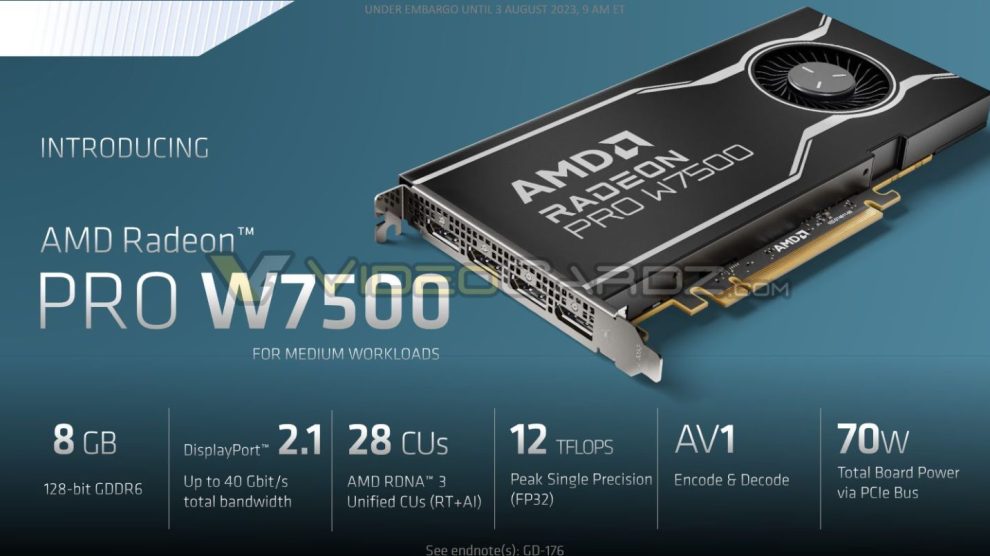
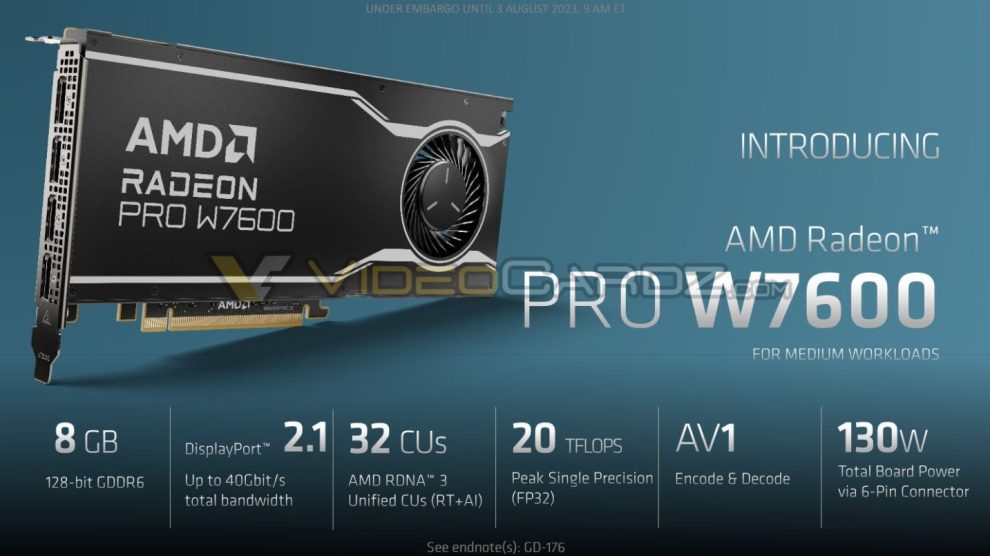
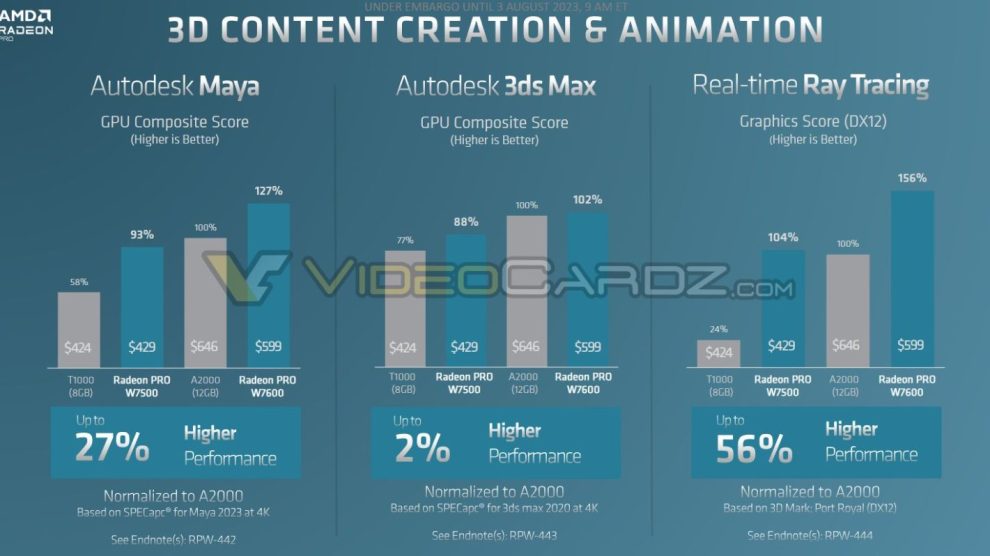
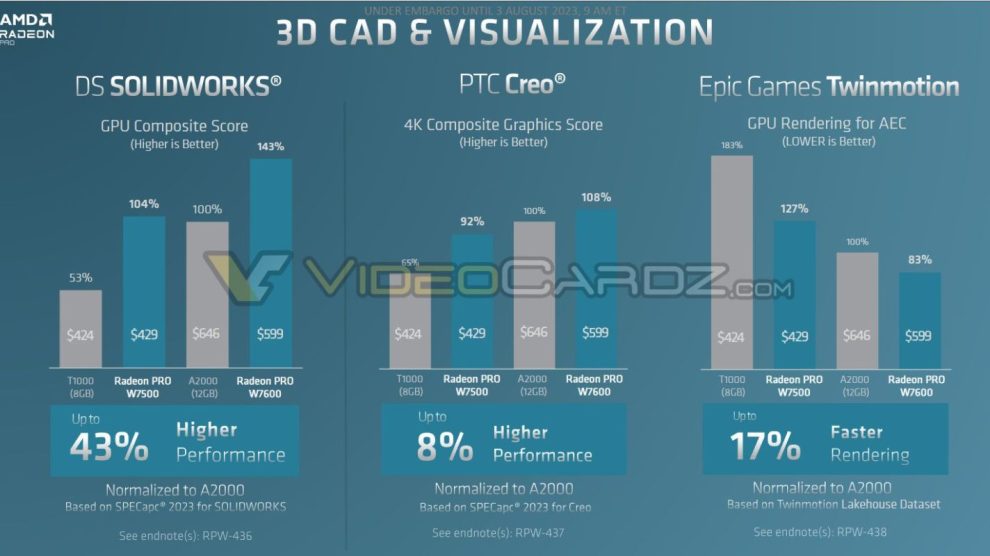
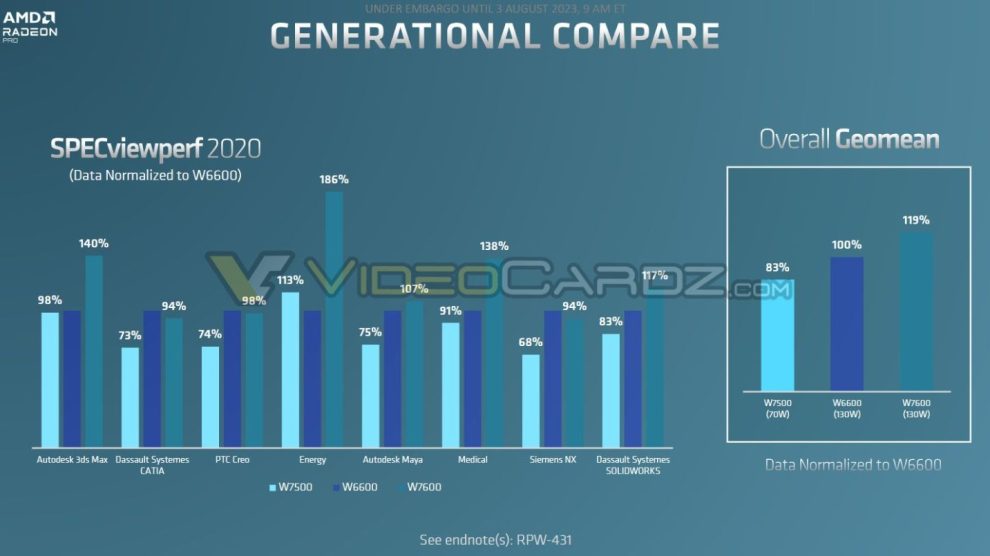
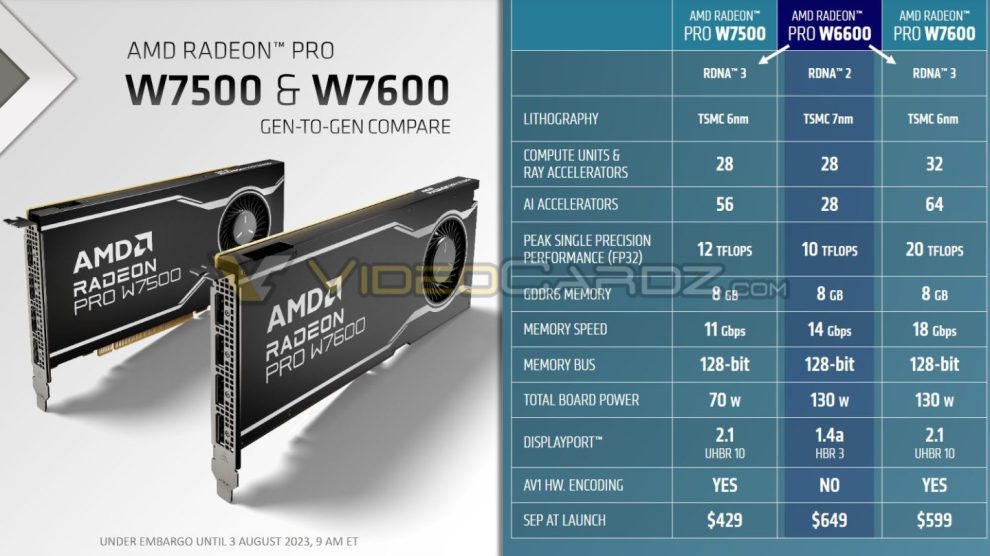

















4 Antworten
Kommentar
Lade neue Kommentare
Veteran
Urgestein
Veteran
Urgestein
Alle Kommentare lesen unter igor´sLAB Community →